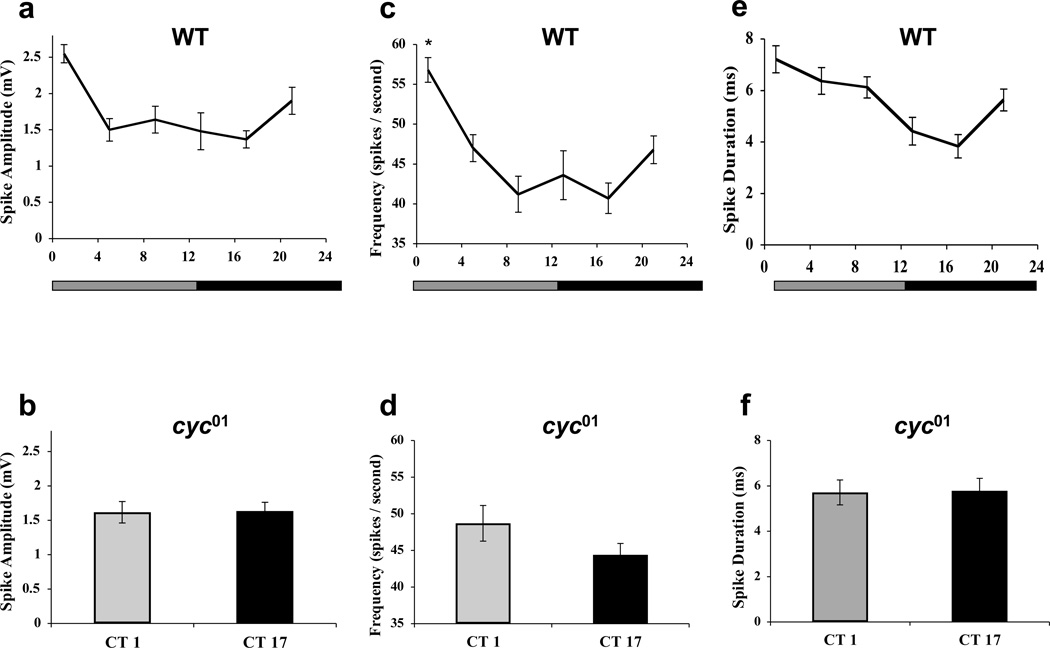Figure 2.
L2-spikes are under circadian-clock control in s-type sensilla. Caffeine-induced L2 neuron spiking activity was measured from s-sensillae during the second day of constant darkness. (a) Spike amplitude was measured from ≥ 30 spikes in WT flies at each of the indicated time points. The overall effect of time of day is significant (p < 0.005) by one-way ANOVA. (b) Spike amplitude was measured from ≥ 30 spikes in cyc01 flies at CT1 and CT17. The difference in mean amplitudes of spikes at CT1 and CT17 is not significant (p > 0.92). (c) Spike frequency was measured from ≥10 individual GRNs in WT flies at each of the indicated time points. The overall effect of time of day is significant (p < 0.001) by one-way ANOVA. Asterisk indicates significant (p < 0.05) changes in firing frequency at CT1 compared to all other times of day. (d) Spike frequency was measured from ≥10 individual GRNs in cyc01 flies at CT1 and CT17. The difference in mean frequencies of spikes at CT1 and CT17 is not significant (p > 0.13). (e) Spike duration was measured from ≥ 20 individual spikes in WT flies at each of the indicated time points. The overall effect of time of day is significant (p < 0.001) by one-way ANOVA. (f) Spike duration was measured from ≥ 20 individual spikes in cyc01 flies at CT1 and CT17. The difference in the mean duration of spikes at CT1 and CT17 is not significant (p > 0.92). All values are mean +/− S.E.M.

